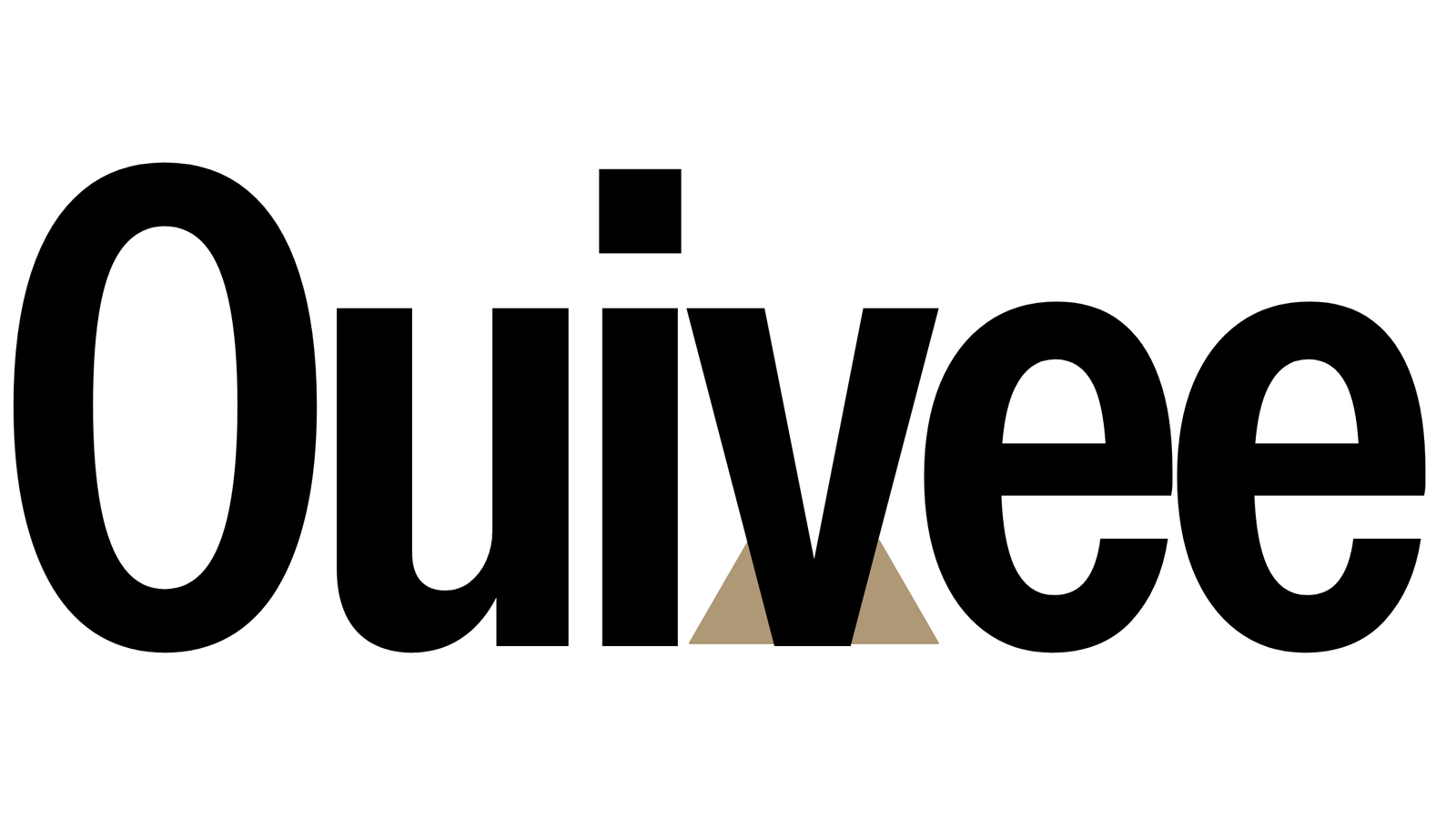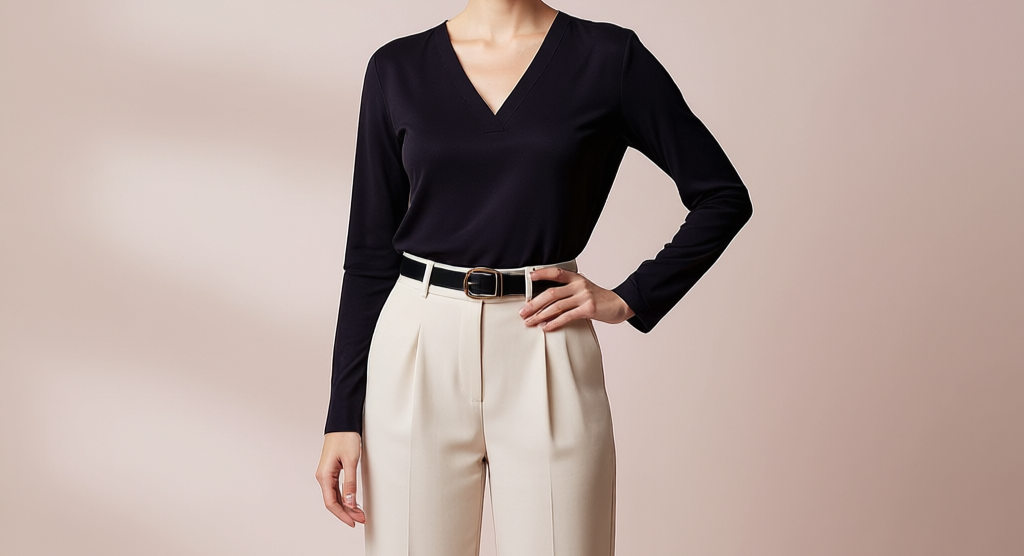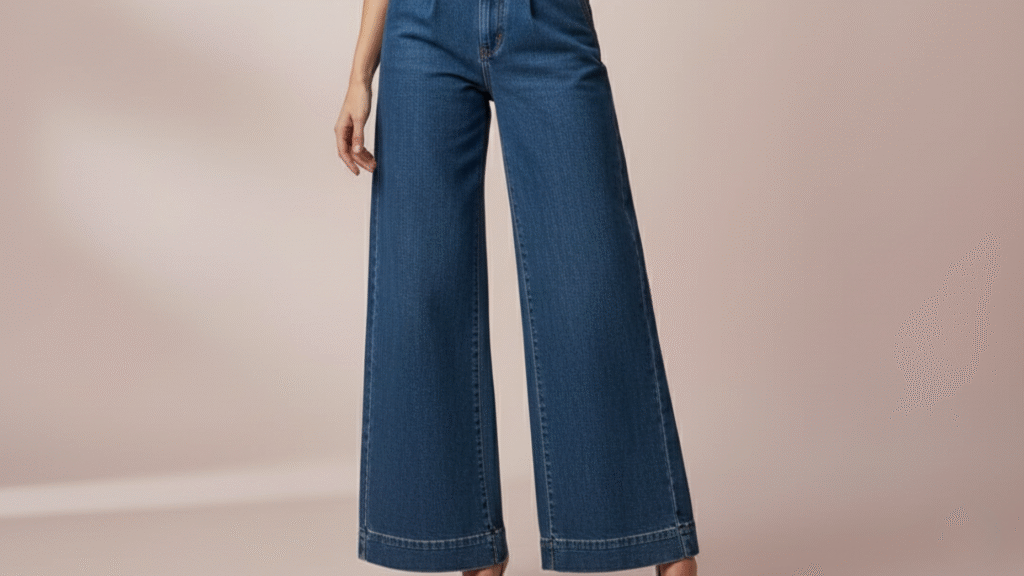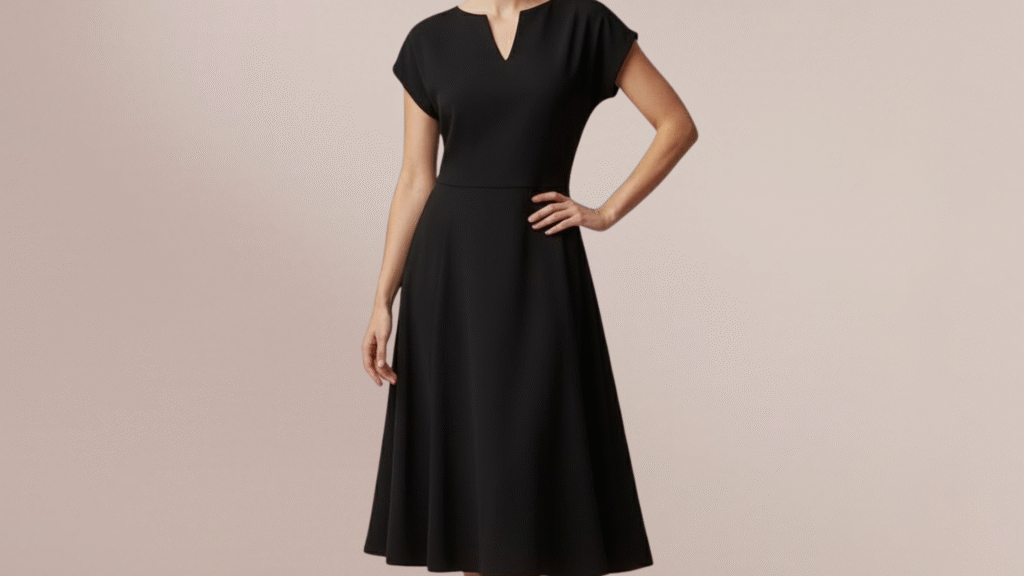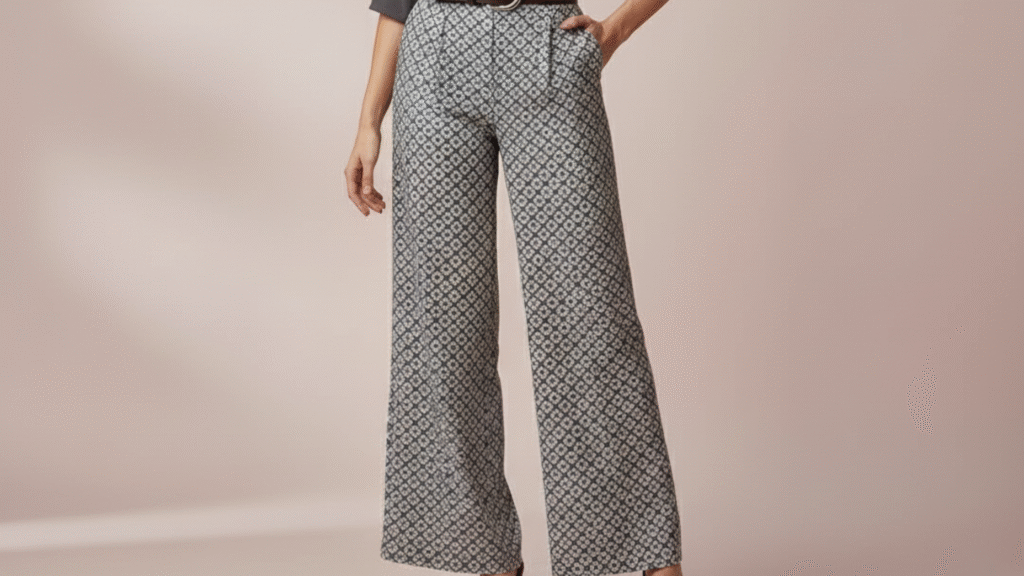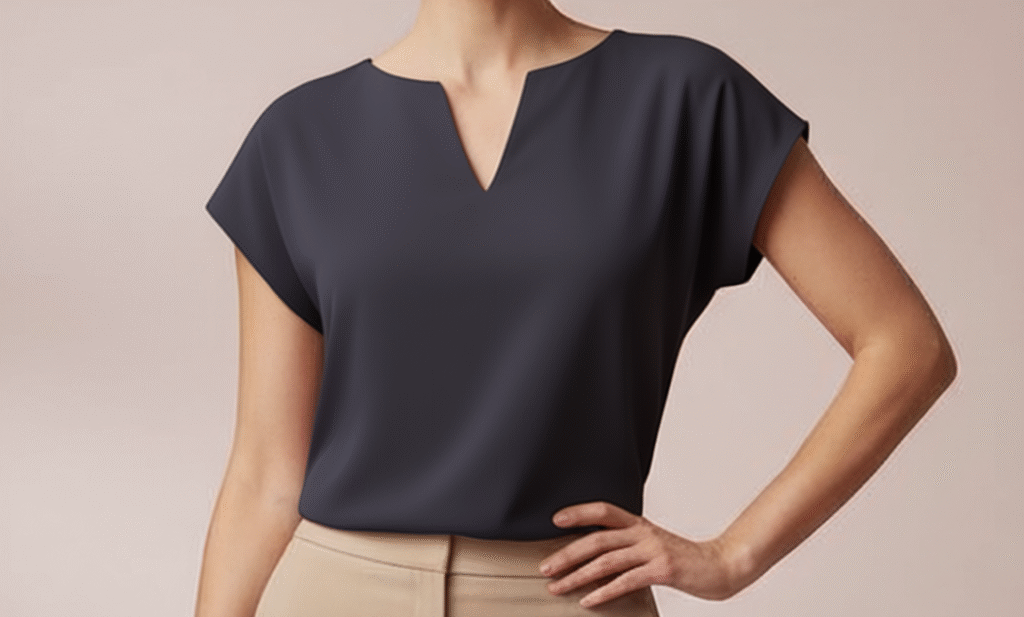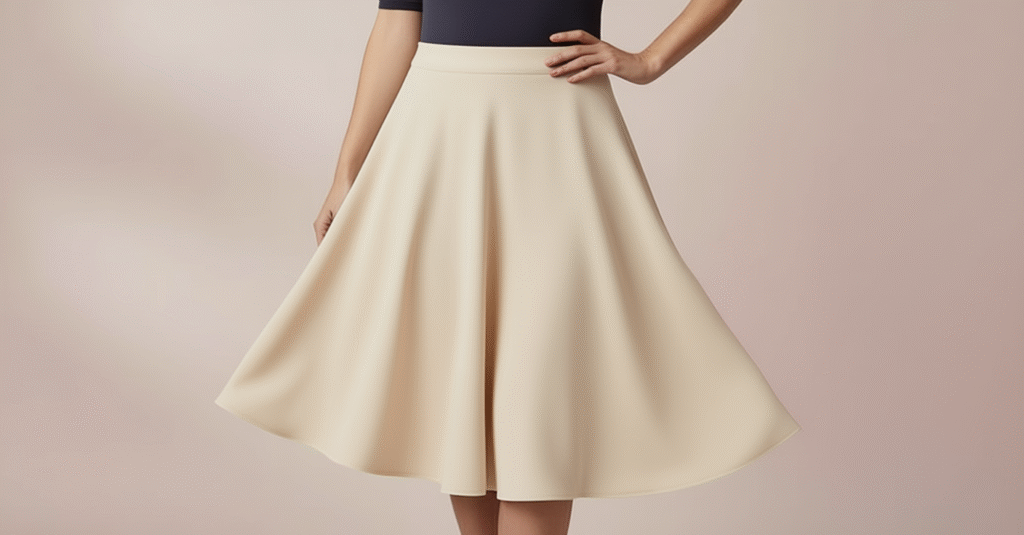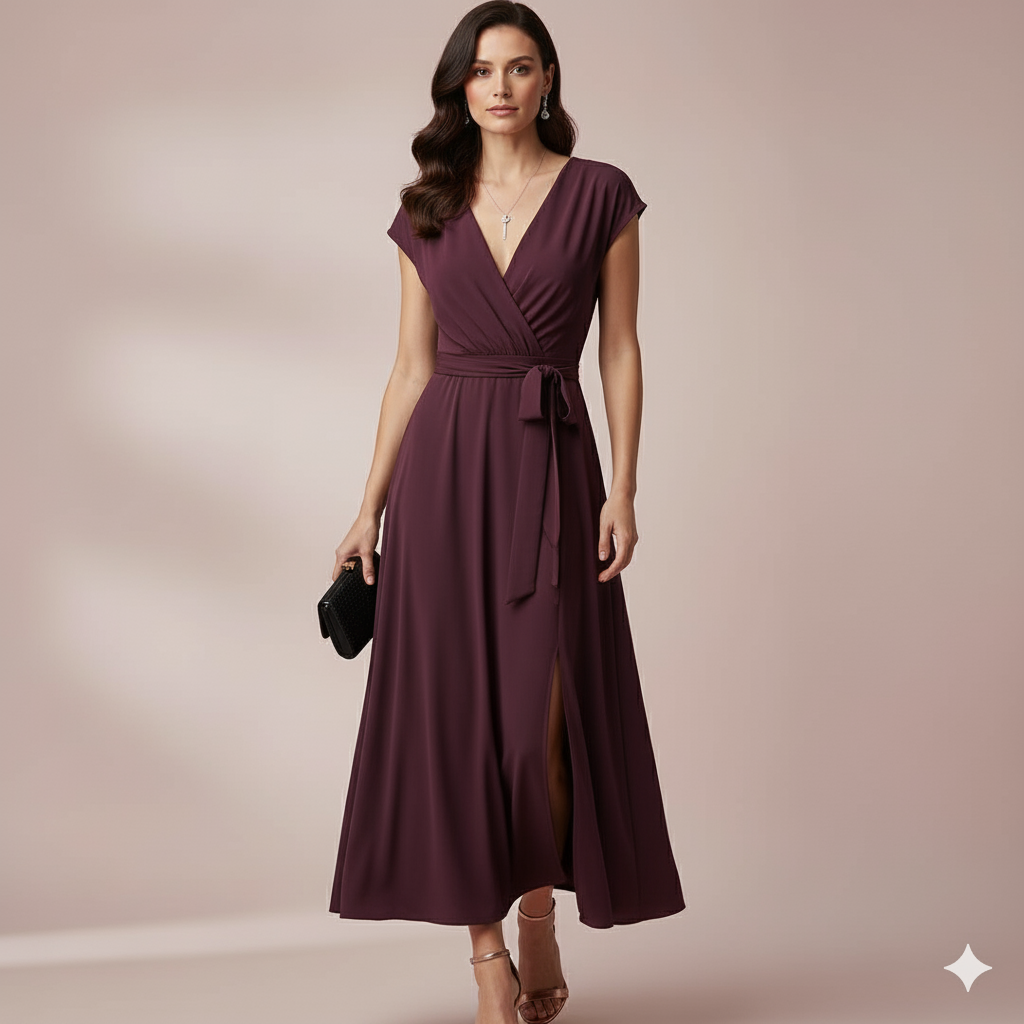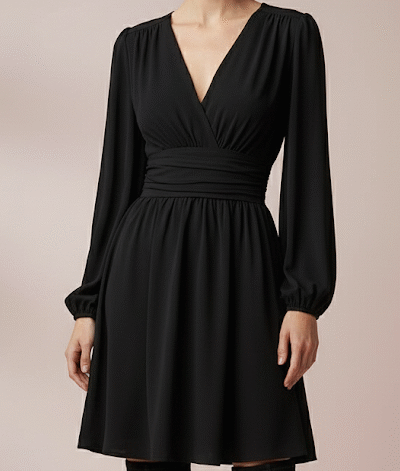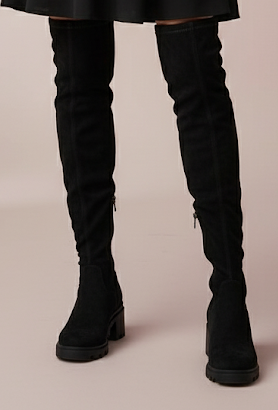When it comes to dressing for your body shape, understanding proportions is key. One of the most common yet often misunderstood body types is the inverted triangle.
Characterized by broad shoulders, a well-defined bust, and narrower hips and legs, this silhouette presents unique styling opportunities—and challenges.
A frequently recommended guideline for inverted triangle body shapes is to wear dark colors on top and light colors on the bottom.
But why does this work? Is it a hard-and-fast rule, or simply a useful visual strategy?
In this article, we’ll explore the science behind color and perception, how it applies to the inverted triangle shape, and practical examples that illustrate its effectiveness—all without resorting to fashion dogma.
What is an inverted triangle body shape?
Before diving into color theory, it’s essential to identify the inverted triangle body shape accurately. Women with this body type typically have:
- Shoulders that are noticeably wider than their hips
- A bust that may be full or average
- A waist that is less defined compared to hourglass shapes
- Hips and thighs that appear slimmer in proportion to the upper body
Celebrities like Angelina Jolie, Cindy Crawford, and Naomi Campbell exemplify this silhouette. Their strong shoulders and narrower lower halves create a top-heavy visual balance.
The goal when dressing an inverted triangle isn’t to hide or “fix” the body, but to create visual harmony—making the upper and lower halves appear more proportionate. This is where strategic use of color comes into play.
The psychology and physics of color in fashion
Color affects how we perceive size and shape. Dark colors absorb light, which can make areas appear smaller or recede visually. Conversely, light colors reflect light, drawing attention and making areas seem larger or more prominent. This principle is rooted in both optical science and psychological perception.
For example, wearing an all-black outfit is a classic slimming trick because it minimizes visual breaks and creates a continuous, receding silhouette. On the other hand, a bright white blouse paired with dark trousers will naturally draw the eye upward, emphasizing the top half.
This isn’t about “tricking” the eye in a deceptive way—it’s about using visual tools to achieve balance, much like an interior designer might use mirrors or lighting to alter a room’s perceived dimensions.
Applying color strategy to the inverted triangle
Given that the inverted triangle has a naturally broader upper body, the objective is often to reduce visual emphasis on the shoulders and bust while adding volume or attention to the hips and legs.
Hence, the recommendation: dark colors on top, light colors on the bottom.
Why dark on top?
Wearing dark shades—such as navy, charcoal, deep burgundy, or black—on the upper half helps minimize the visual weight of the shoulders and chest.
A dark V-neck top, for instance, not only recedes visually but also elongates the neck and draws the eye downward, subtly shifting focus away from width.
Consider a real-world example: A woman with an inverted triangle shape wears a black boatneck top. Boatnecks already emphasize shoulder width, but the dark color counteracts that by reducing contrast and visual prominence. If she wore the same top in white, the effect would be amplified—drawing even more attention to her broadest area.
Why light on bottom?
Lighter colors on the lower half—think creams, light denim, soft pastels, or even bright hues—serve to widen the visual field below the waist. This doesn’t mean you need neon leggings; even a medium-wash pair of jeans or a taupe skirt can create enough contrast to balance the silhouette.
For instance, pairing a dark olive green turtleneck with light beige wide-leg trousers creates a harmonious transition from top to bottom. The lighter trousers add visual mass to the hips and legs, making them appear closer in proportion to the shoulders.
It’s not just about color—context matters
While the dark-top/light-bottom rule is a helpful starting point, it’s not absolute. Other factors influence how effective this strategy is:
- Fabric and texture: a dark top made of shiny satin may still draw attention due to its reflective quality, whereas a matte, textured fabric in the same color will recede more effectively. Similarly, a light-colored bottom in a structured fabric (like stiff cotton or tailored wool) adds more visual volume than a flowy chiffon skirt.
- Patterns and prints: large prints on the bottom can amplify the widening effect, while small, dense patterns on top can minimize it. A woman with an inverted triangle might choose a subtle pinstripe blouse (dark base) and a floral midi skirt in soft peach or sky blue.
- Fit and silhouette: even with ideal color choices, poor fit can undermine balance. A boxy dark top may still add bulk to the shoulders, while overly tight light bottoms might not create the desired volume. The goal is to complement—not contradict—the color strategy with appropriate cuts.
Real-life examples and styling scenarios
Let’s look at practical applications:
Casual day out:
- Top: Charcoal gray crewneck sweater (dark, fitted but not tight)
- Bottom: Light-wash straight-leg jeans
- Result: The dark sweater minimizes shoulder width, while the light jeans add subtle fullness to the lower half, creating a more balanced line.
Office setting:
- Top: Navy blazer over a black shell
- Bottom: Beige tailored trousers
- Result: The monochromatic dark upper half creates a streamlined look, while the light trousers anchor the outfit and widen the hip area visually.
Evening event:
- Top: Deep plum off-the-shoulder top (dark but with strategic neckline)
- Bottom: Silver-gray A-line skirt
- Result: The dark top keeps focus controlled, while the reflective light skirt draws attention downward and adds movement and volume below the waist.
When to break the rule
Rules in fashion are guidelines, not laws. There are times when wearing light on top and dark on bottom makes sense—even for inverted triangles. For example:
- Layering: A light scarf or statement necklace over a dark top adds interest without overwhelming the shoulders.
- Monochromatic Looks: Wearing one color head-to-toe can elongate the frame and create cohesion, especially in neutral tones.
- Personal Preference and Confidence: If someone feels most confident in a white blouse, that confidence often outweighs minor imbalances. Styling can then compensate with volume on the bottom—like a full skirt or wide-leg pants—even if they’re dark.
Final thoughts: balance over rules
The inverted triangle body shape is powerful and statuesque. Rather than “correcting” it, the aim should be to enhance its natural strengths while creating visual equilibrium. Using dark colors on top and light colors on the bottom is a time-tested method grounded in how humans perceive light, color, and form. But it works best when combined with thoughtful choices in cut, fabric, and proportion.
Ultimately, fashion is a tool for self-expression. Understanding your body shape gives you more options—not fewer. By learning why certain strategies work, you gain the freedom to adapt them creatively to your lifestyle, preferences, and personality.
